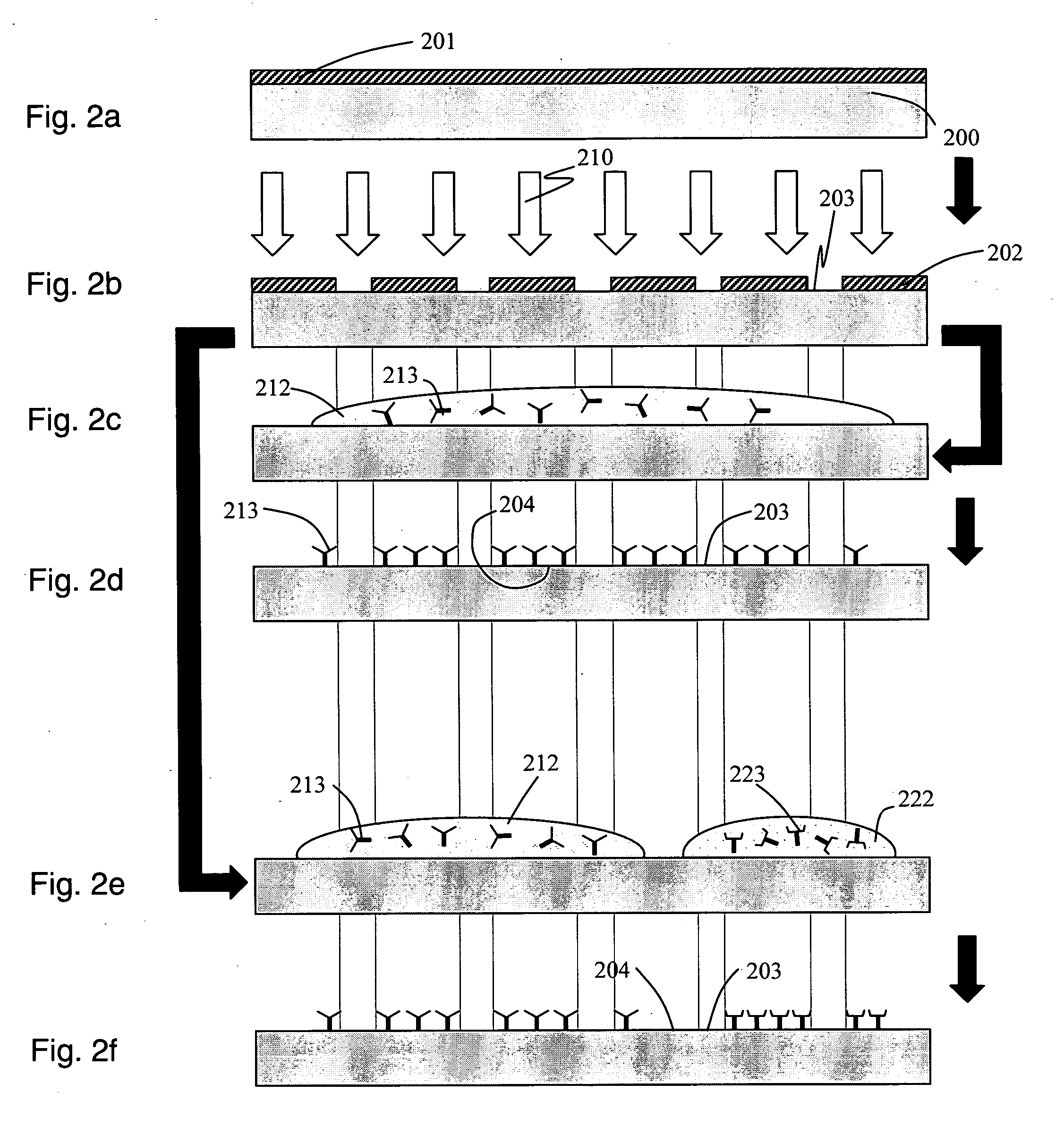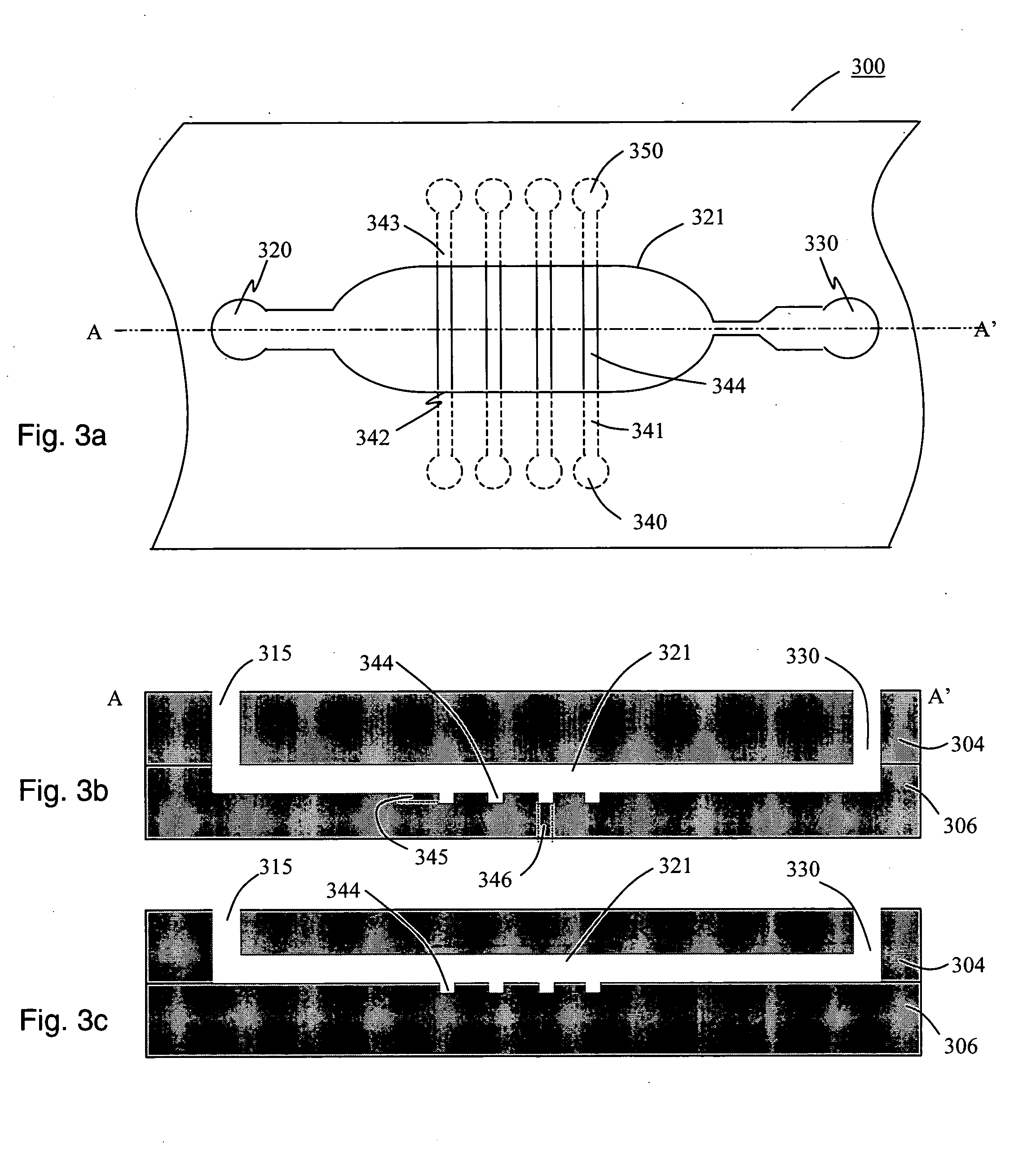Fully integrated protein lab-on-a-chip with smart microfluidics for spot array generation
a biochip and lab technology, applied in the field of protein labonachips, can solve the problems of not being able to meet the needs of point-of-care testing apparatuses, limiting mobility, and not being able to present a truly integrated biochip, and achieve the effect of improving detection sensitivity
- Summary
- Abstract
- Description
- Claims
- Application Information
AI Technical Summary
Benefits of technology
Problems solved by technology
Method used
Image
Examples
Embodiment Construction
[0034] Described herein are techniques to fabricate and develop fully-integrated disposable biochips specifically oriented towards the detection of biomolecules using immunoassay detection techniques. In accordance with an embodiment of the present invention, a biochip is used for detecting an array of cardiac biomarkers (proteins and peptides). Furthermore, disclosed herein are techniques to increase the sensitivity of the biochip by the use of an integrated microlens array.
[0035] Definitions
[0036] The process of “Microfabrication” as described herein relates to the process used for manufacture of micrometer sized features on a variety of substrates using standard microfabrication techniques as understood widely by those skilled in this art. The process of microfabrication typically involves a combination of processes such as photolithography, wet etching, dry etching, electroplating, laser ablation, chemical deposition, plasma deposition, surface modification, injection molding,...
PUM
 Login to View More
Login to View More Abstract
Description
Claims
Application Information
 Login to View More
Login to View More - R&D
- Intellectual Property
- Life Sciences
- Materials
- Tech Scout
- Unparalleled Data Quality
- Higher Quality Content
- 60% Fewer Hallucinations
Browse by: Latest US Patents, China's latest patents, Technical Efficacy Thesaurus, Application Domain, Technology Topic, Popular Technical Reports.
© 2025 PatSnap. All rights reserved.Legal|Privacy policy|Modern Slavery Act Transparency Statement|Sitemap|About US| Contact US: help@patsnap.com



